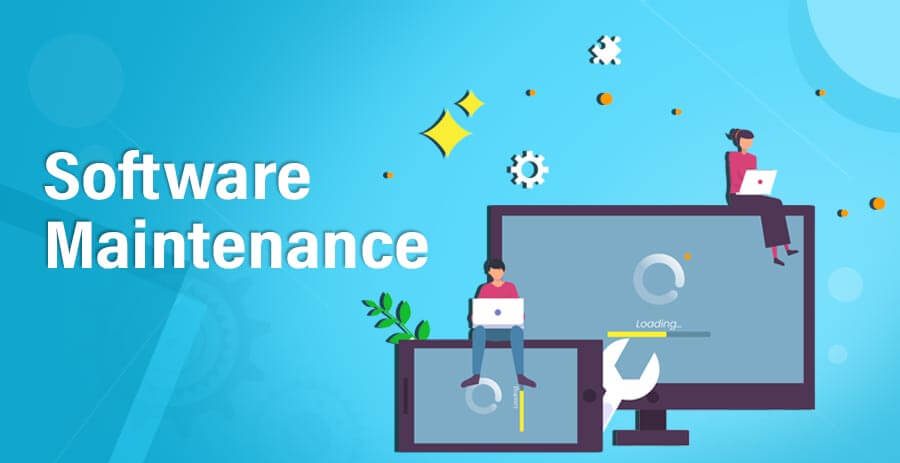Uptime and efficiency must be kept at a high degree in the world of software development. However, maintaining software applications necessitates a sizable investment in time and money and can be costly for any company. Many businesses use Service Level Agreements (SLAs) to organize and prioritize software maintenance duties in order to reduce this risk. We will discuss the concept of software maintenance SLA management and how it can aid organizations in streamlining their software maintenance procedures in this piece.
What is Software Maintenance?
Software maintenance involves updating, modifying, and changing software to meet shifting customer demands. Software maintenance is carried out after a product has been released for a number of reasons, such as enhancing the software as a whole, fixing problems or bugs, enhancing speed, and more.

Software maintenance is an inherent component of the SDLC (software development life cycle). Software developers must continuously be on the lookout for ways to correct and improve their work in order to stay competitive and relevant. They do not have the luxury of releasing a product and allowing it run.
To keep any software operating for a long time and satisfy users and customers, it’s essential to employ the proper software maintenance techniques and strategies.
What are the 4 types of software maintenance?
The four distinct kinds of software maintenance are carried out for various objectives and motives. Depending on how long it lasts, a component of software may require one, two, or all maintenance types.

Corrective Software Maintenance
The standard and most common type of maintenance is corrective software maintenance (for software and anything else for that matter). When a component of software malfunctions, including bugs and errors, corrective software maintenance is required. These must be resolved right away because they could have a significant effect on how the software functions generally.
The majority of the time, bug complaints from users enable software vendors to fix problems that call for corrective maintenance. An additional benefit that will boost your company’s reputation and dependability is the ability to identify issues and fix them before customers even become aware of them.
Preventative Software Maintenance
The goal of preventative software maintenance is to plan ahead so that your software can continue to function as intended for as long as feasible.
This entails implementing any required upgrades, modifications, and other changes. Preventative software maintenance may address minor issues that may not seem important at the moment but could grow into bigger issues later. These are referred to as latent flaws, which must be found and fixed in order to prevent them from becoming effective faults.
Perfective Software Maintenance
Once the software is made available on the market, as with any other commodity on the market, fresh problems and suggestions emerge. For the software to be the best tool for their purposes, users may see the need for additional features or specifications. Perfective program maintenance is used in this situation.
Perfective software maintenance attempts to modify software by removing features that are unnecessary or ineffective for the software at hand and adding new features as needed. Software remains relevant through this process as the market and user requirements evolve.
Adaptive Software Maintenance
Changing technologies, as well as laws and regulations pertaining to your software, are all factors in adaptive software maintenance. These include adjustments to the operating system, online storage, hardware, etc. Your software needs to adapt when these changes are made in order to correctly meet the new requirements and keep functioning.
What is a Service Level Agreement?

A service level agreement, also known as a SLA, is a clause in a contract that specifies the precise services that a provider will offer and the necessary caliber or standard for those services. The SLA can be used in facilities management agreements, managed services agreements, outsourcing agreements, and other agreements for the supply of services.
Why is Software Maintenance SLA Management Important?
Software maintenance SLA management can be a time- and resource-consuming process, particularly in big organizations that depend on sophisticated software programs. To ensure that software maintenance tasks are finished within the required timeframe and with the least possible disruption to the organization’s activities, it is crucial to manage them effectively. Software maintenance SLA management is useful in this situation.
Software maintenance setting expectations and objectives for software maintenance tasks as well as making sure they are finished within the specified timeframes are all part of SLA management. Organizations are able to:
- Prioritize software maintenance tasks: Set SLAs to help organizations prioritize software maintenance tasks based on the effect they will have on daily business operations.
- Monitor software maintenance activities: SLAs assist organizations in monitoring the development of software maintenance operations and identifying any potential bottlenecks or problems that may emerge.
- Ensure compliance: SLAs aid in ensuring that legal or contractual duties are followed.
- SLAs aid in better communication between company stakeholders and software development teams.
- Manage costs: Organizations can more effectively manage the expense of software maintenance activities by establishing SLAs.
- Increase efficiency: Organizations can increase efficiency and reduce downtime by prioritizing tasks and making sure they are finished within the specified timeframe.
Conclusion
Software maintenance SLA management provides a framework for prioritizing tasks, tracking progress, and ensuring compliance with regulatory requirements or contractual obligations. By doing so, they can improve their efficiency, reduce downtime, and enhance the overall user experience.
